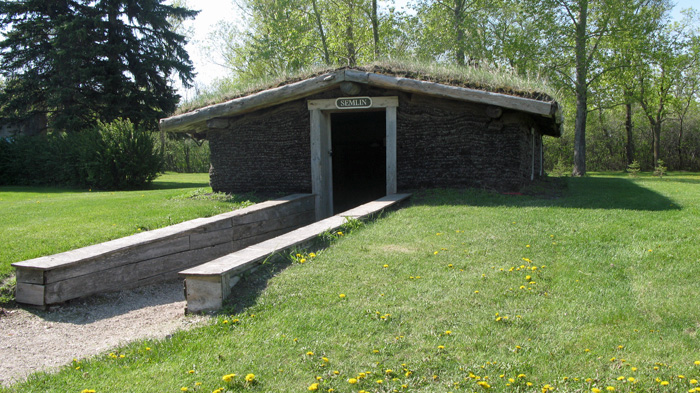Village News
Wisdom from the Past During Times of Uncertainty

In the present climate, our interactions with the world look different. For many, contemplating the stories of ancestors is a useful tool in discerning such a time because they give perspective and solidarity. I have been visiting the Mennonite Heritage Village for many years and the knowledge I have gained continues to shape my perception of the world.
When I look through our old family albums, I can easily pinpoint pictures of myself exploring the Mennonite Heritage Village (MHV). In some, I am covered in face paint, cradling a baby chick in my chubby hands. In others, I am squished into a train car with my brother, squinting against the sun and waving for the camera.
When I was in Grade Five, I was given the opportunity to volunteer in the Summer Kitchen selling schnetje. What struck me the most from that experience was the multitude of stories I heard. Everywhere I went, I heard bits and pieces of conversations as visitors, volunteers and staff connected their family stories. In a time where we are all reassessing what is important to us, the museum reminds us of the importance of reaching out to others and remaining in community, even though this looks different than it used to.
Over the last two years, I have learned more about the story of early Mennonites through working at MHV. I continue to be inspired by the continued relevance of the experiences of my ancestors and have viewed these stories through a new lens during this time. The Semlin is a building that strikes me as a symbol of resilience and a reminder of the importance of community.
During the 1870s, many Mennonites arrived in Canada late in the summer, which left them with little time to build a house. Semlins were created as temporary shelters by making a hole approximately a meter deep and then logs, mud, grass, and sod were used to build a roof. As a child visiting the museum, I wondered how early Mennonite settlers survived long winters in this building. However, as I have heard stories passed down throughout generations, I have discovered how vital the role that community played in the survival of early Mennonite settlers. When one family’s Semlin became snowed in, their neighbors dug them out. When there was a shortage of food during the winter, they shared. During difficult times, it is important to look for the helpers, and stories of such individuals are woven into the very fabric of MHV.
As I look back to my experiences visiting and working at the museum, I am reminded more than ever of the importance of community and the wisdom offered from the past. We are all experiencing different levels of uncertainty during this time. However, the museum allows us to draw insight from those before us, shining a light of hope.
Editor’s note: Raelyn Dick is one of our Education students who has worked with the Mennonite Heritage Village the past two summers. We appreciate her enthusiasm for this museum and our community.




